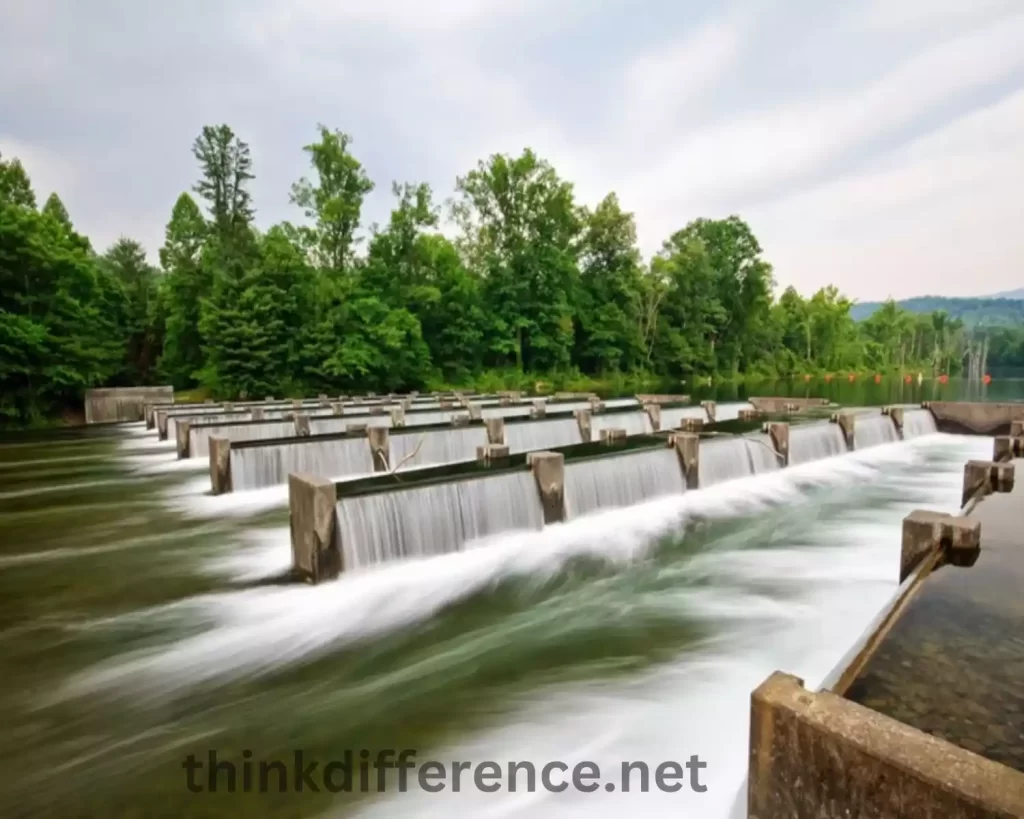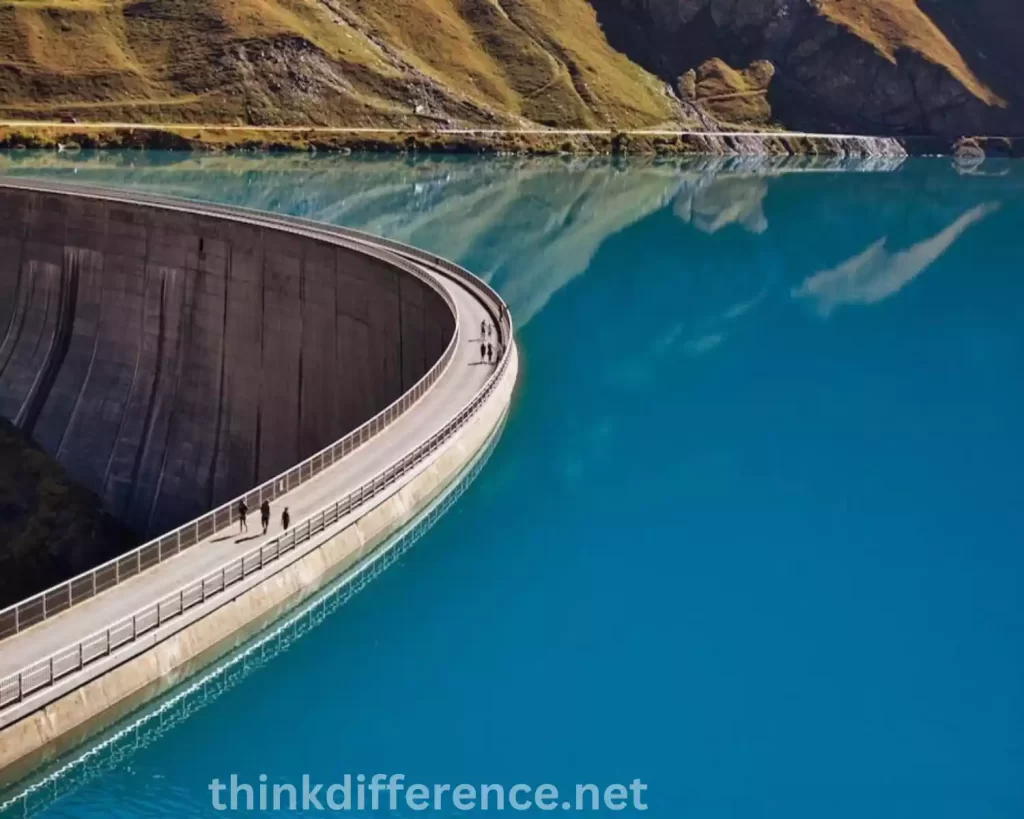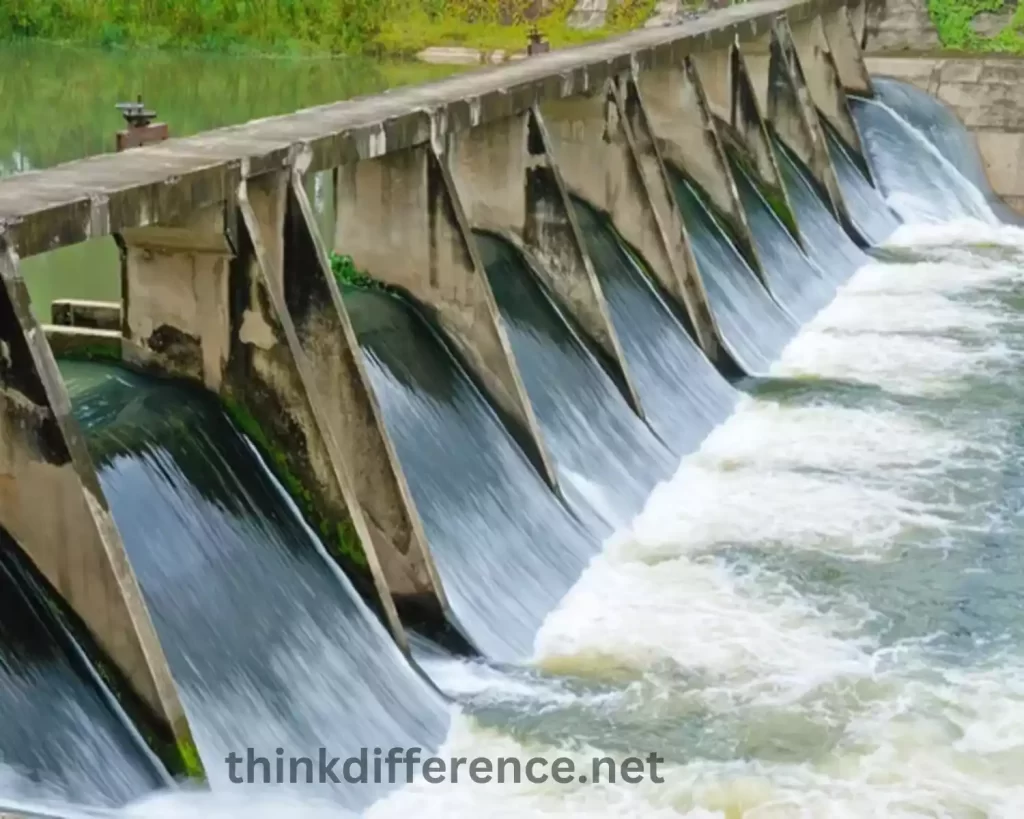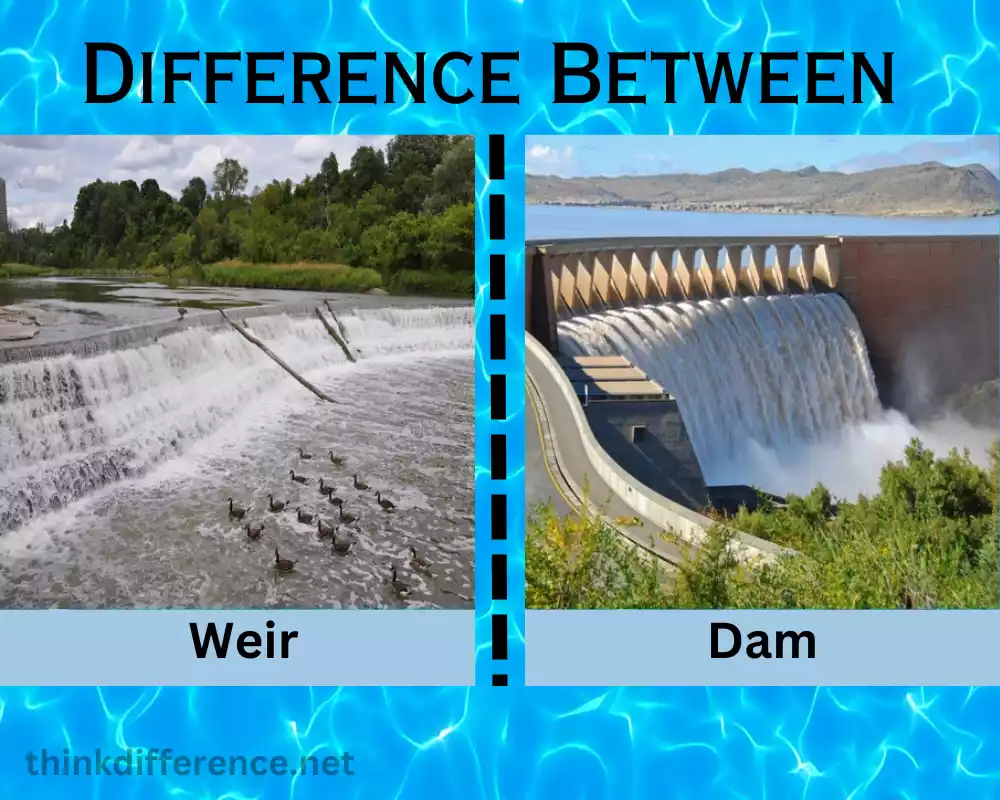The Overview of Weir and Dam
A weir is an artificial structure constructed to regulate or divert river currents. Constructed usually of concrete, wood, or stone construction and its size varying according to purpose, weirs can measure water flow rates, raise or lower levels upstream, divert waters towards an area or raise them levels upstream. Weirs also serve to measure flow velocity upstream while raising levels downstream as well.

Dams are structures constructed along a waterway or river to control or impound its flow and regulate or impound it, often to regulate or impound flood levels or create hydroelectric power production.
They often serve multiple functions including flood control and creating lakes or reservoirs behind them for storage purposes – water supply, flood control, and hydroelectric generation all being possible uses of dams as well as their environmental impacts which may vary significantly between concrete or earth fill materials-based dams.
Weirs and Dams play an essential role
Weirs, dams, and other water management structures play a critical role in managing and controlling river flows. Dams and weirs may be used for various purposes including water supply, flood prevention, hydroelectric power production, or even recreation.
Weirs can be used to direct water in specific directions or change its level in an upstream area, providing crucial measurements on water flow within streams or rivers that help determine their availability for managing their resources and understanding water resource availability.
Dams can create reservoirs for power generation and water supply, as well as flood control; dams hold back excess rainfall or snowmelt until its gradual release helps prevent flooding downstream. These dams offer recreational opportunities such as boating and fishing.
Weirs and Dams can have detrimental environmental impacts. They may alter fish and wildlife habitats as well as impair water quality, so it’s crucial that before their construction they fully assess all potential benefits and drawbacks of such structures.
What is Dam?
Dams are concrete walls that span rivers. Their primary function is to store water for storage purposes as well as increase flow for producing electricity, with their reservoir water then providing drinking water to cities nearby and those needing it in need.

Humans have used high walls for millennia to regulate water flow from meandering rivers, making a statement about humanity’s intelligence and abilities to control it and provide access to needed supplies as well as drainage of agriculture. To truly appreciate innovative designs of dams around the globe – Hoover Dam, in particular, is a good example – one must see how clever walls are used to make the best use of flowing river potential – Hoover Dam being just such an example Colorado River!
What is Weir?
Weirs are small dam types used to control river flow. Similar to dams, they feature walls crossing a river with special openings like V or triangle shapes across it and an increase in head levels that can be measured upstream of their structure. Wide crests or rectangular shapes tend to be preferred while weirs made with thin metal plates have thin crowning structures.

A weir is also known as a low-head dam; it acts as an obstruction across a stream to collect water behind itself for the generation of power or recreation, or canal construction that transports it further downstream or provides drinking water supplies in nearby populated areas. Water collected behind weirs may then be used either directly, for the generation of energy from renewable resources, or stored as drinking water supply for nearby residents.
Weirs can be useful, yet dangerous devices, as they create powerful hydraulic waves which could cause people to drown.
Differences Between Weir and Dam
There are several differences between weirs and dams, including:
- Size: Weirs are small dams used to control river and stream flows while dams can hold massive volumes of water and create reservoirs for storage purposes.
- Use: Dams, weirs, and other water-controlling structures are designed to store water for storage purposes, generate hydroelectricity for power production purposes, manage flood waters effectively, and serve recreational needs.
- Design: Dams and weirs both feature different designs, Weirs feature tops that let water pass freely over them while dams utilize outlets or turbines to direct and manage its flow.
- Impact on the Environment: Weirs tend to have less of an environmental impact compared to dams; dams can have profound ramifications for rivers and streams in terms of changing their flow, altering fish and wildlife habitat, transporting of sediment, etc.
- Construction: Both dams and weirs may be constructed using materials like concrete, stone, or wood; however dams usually require extensive engineering design and engineering services before construction begins; concrete steel or earth-fill may also be necessary depending on their construction material(s).
Both weirs and dams play important roles in managing water resources; each structure differs in terms of size, purpose, design, and environmental impacts.
Similarities between Weir and Dam
Weirs and Dams share many similar qualities despite their various distinctions:
- Water Management: Weirs and dams both play an essential part in controlling river and stream flow as well as being used for irrigation, hydroelectric generation, and storage of water resources.
- Construction materials: Concrete, stone, and wood are popular construction materials used for building weirs or dams.
- Design: Both weirs and dams must be constructed to maintain structural integrity under the pressure of flowing water, to support their functionality as water reservoirs.
- Environmental Effect: Both weirs and dams have environmental ramifications that alter river flow and sediment transport, impacting fish habitats as well as any wildlife habitats nearby.
- Importance: Weirs and dams are two crucial structures that aid humans by managing water resources to meet human needs, such as providing drinking water or energy production.
Before choosing weirs or dams as solutions to water management projects, it’s vitally important to research their differences and potential impacts in detail.
When to Use Weir vs Dam
Decisions on whether weirs or dams should be utilized depending on each water management project’s individual needs. Take these factors into consideration when making your selection between either option.
- Water supply needs: Dams are ideal solutions if your goal is to store large volumes of water for agricultural or municipal uses; alternatively, weirs may work better when diverting water for irrigation or treatment purposes.
- Needs for flow regulation: Weirs and dams can be used to regulate river and stream flows while dams can serve as storage devices as well.
- Environmental Effect: Dams can have significant environmental ramifications, from altering river flow and sediment transport, as well as altering fish and wildlife habitat, to disrupting fish passage and sediment transportation. Weirs tend to have less of an environmental impact but could still hinder fish passage or affect sediment transport.
- Cost and complexity: Weirs can be constructed more quickly and at lower costs than dams.
- Flood Control: Dams can help control floods by temporarily storing excess rainfall or snowmelt before dispensing it gradually over a controlled timeframe. Weirs also play an integral part in flood mitigation; typically in conjunction with another measure for prevention.
Deliberation over weir or dam construction should depend on an analysis of water management plan goals and requirements – including factors like supply, regulation flow rate, environmental impacts, and costs.
Conclusion
Weirs and dams play key roles in water management. Weirs regulate river and stream waters while dams hold back large volumes. When selecting weirs or dams as structures for any given project involving water management – whether for supply purposes, regulation of flows, environmental impact assessments, or cost – care must be taken to consider potential benefits as well as costs before embarking on construction activities.
In doing this it’s vitally important that sustainable use of natural water resources for both humans as well as environmental considerations is prioritized when prioritized over construction activities!



